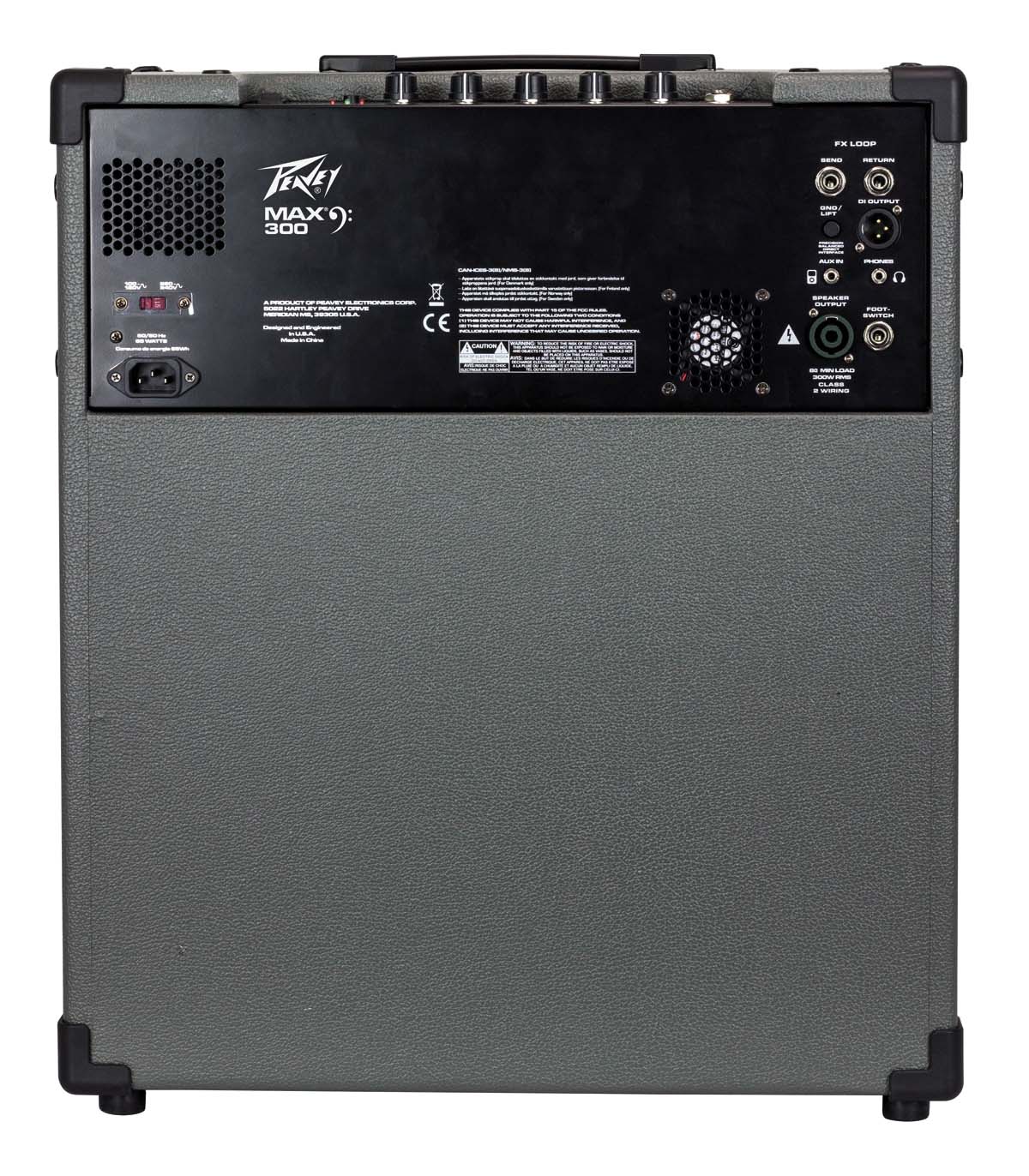MusicRadar Verdict
Now this is an impressive, well-designed combo. The MAX 300 has all the essentials and places them within easy reach, offering some formidable tones and a fair degree of control over them.
Pros
- +
Clever EQ and tone-shaping features makes it very versatile.
- +
Kosmos-C option helps the MAX 300 punch above its weight.
- +
Lightweight build and combo convenience.
- +
Competitively priced.
Cons
- -
Not at this price.
MusicRadar's got your back
What is it?
We might be seeing a trend in bass amplification for smaller heads and more portability, but for many players, the bass combo amp remains the most attractive option for their needs.
Peavey's new MAX series arrives with a certain expectation that comes with the name on the grille cloth. Peavey has long been a byword for reliability and solid performance when it comes to combos.
The series includes a lightweight 600-watt amp head and combos with a variety of speaker sizes and power outputs, from the MAX 100 with its single 10-inch speaker to our review model, the MAX 300, which houses a pair of 10-inch speakers in a lightweight, though unspecified timber, with 300-watts of solid-state juice on hand.
Given that combos are convenience in a box, it's gratifying that the top-mounted control panel is intuitive enough as to make the manual obsolete. You have a gain dial, under which there is a button to engage overdrive mode, 3-band EQ offering 15db of boost or cut, volume, There is also a tuner that doubles as a mute switch when engaged.
The overdrive is very musical, using a tube-emulation circuit that is dynamic and convincing
Underneath the EQ controls you'll find Contour, Mid-Shift and Bright buttons joining the Kosmos-C mode, which, when activated, increases the MAX 300's harmonic response.
At 21kg, you might want to bend the knee when you lift it, but the MAX 300 is no behemoth. The angled baffle design helps those dual-speakers project their ouput, while there is DDT speaker protection on hand to stop any nasty surprises.
On the rear of the unit, there is a headphones output, effects loop, XLR DI, Aux-In and a Speakon output for adding an additional cabinet – a very decent option. There is a footswitch socket but that is sold separately.

Performance and verdict
With everything set flat, the MAX 300's response is water-tight. Whether through an active, passive or five-string bass, there's an impressive solidity to the low end that belies the dual 10-inch format. But tweaking the EQ and bringing into play the Mid-Shift, Contour and the Kosmos-C feature is where things get really interesting.

• Fender Rumble 200 Bass Combo
The quality and sound projection from something this easy to transport is what makes this combo so impressive. If you crave portability, yet still want lush and distinctive tones, this will do the job really well.
• Ashdown Original C112-300
If you’re looking for a sturdy, reliable, sweet-sounding combo, look no further.
The Mid-Shift allows you to centre your midrange at 250Hz or 600hz, with bass set at 50Hz and treble 6kHz. The Bright switch acts as a top-end boost, adding 10dB at 1kHz, sprinkling a little extra detail into the mix.
Contour, meanwhile, is for scooped, slap-ready tones, as it jacks the bass and treble and cuts the mids. It can sound a little on the empty side. The overdrive is very musical, using a tube-emulation circuit that is dynamic and convincing. You can add a very respectable amount of grit to your sound without it falling apart.
The Kosmos-C feature is a little harder to describe. It enhances sub-harmonics and harmonics to sprinkle a sort of magic dust on the MAX 300's performance, and perhaps this is why the combo sounds as big and impressive as it does. The bass is full and rich, and is especially kind to active pickups.
At this price, the MAX 300 is a very convincing combo. The ability to add a supplementary cabinet via the Speakon output is a very nice touch, especially when playing in a band context. But out of the box the sounds are big and wide, projecting bass all over the place. Which, as a bassist, is what you want.
MusicRadar verdict: Now this is an impressive, well-designed combo. The MAX 300 has all the essentials and places them within easy reach, offering some formidable tones and a fair degree of control over them.

Hands-on demos
BassTheWorld
Music Villa
Peavey
Specifications
- Made In: China
- Power: 300 watts RMS
- Features: Gain, bass, middle, treble, master, chromatic tuner, overdrive, contour, mid-shift, bright, Kosmos-C, tune/mute, tweeter defeat
- Speakers: 2 x 10” speakers and tweeter
- Dimensions: 580mm (H) x 492mm (W) x 412mm (D) / 22.8” (H) x 19.4” (W) x 16.2” (D)
- Connections: ¼” jack inputs (active and passive), ¼” jack Send/Return FX loop, balanced XLR DI output with ground lift switch, 3.5mm auxiliary input, 3.5mm headphone output, ¼” jack footswitch, Speakon output
- Weight: 21 kg / 46.4 lbs
- Contact: Peavey
MusicRadar is the number one website for music-makers of all kinds, be they guitarists, drummers, keyboard players, DJs or producers...
- GEAR: We help musicians find the best gear with top-ranking gear round-ups and high-quality, authoritative reviews by a wide team of highly experienced experts.
- TIPS: We also provide tuition, from bite-sized tips to advanced work-outs and guidance from recognised musicians and stars.
- STARS: We talk to musicians and stars about their creative processes, and the nuts and bolts of their gear and technique. We give fans an insight into the craft of music-making that no other music website can.











